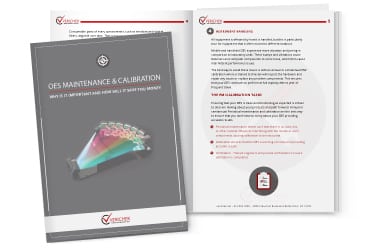 Hardness testing metal is an essential part of ensuring the integrity and safety of any metal product that will be used in industrial or commercial settings. The process involves measuring the hardness of metals on a scale so that manufacturers can make sure that their products meet certain standards for durability and strength.
Hardness testing metal is an essential part of ensuring the integrity and safety of any metal product that will be used in industrial or commercial settings. The process involves measuring the hardness of metals on a scale so that manufacturers can make sure that their products meet certain standards for durability and strength.
The importance of hardness testing metal cannot be understated, as it ensures that the metal product will be able to withstand whatever use it has been designed for. The following article explores what hardness testing is, different methods of hardness testing, and the various types of hardness testing equipment used in the process.
Why Perform Hardness Testing?
Hardness testing metal is important for ensuring that the metal used in manufacturing processes and products will meet certain standards of performance. The hardness of a metal can affect its strength, durability, and resistance to corrosion.
The results of hardness testing can help manufacturers make sure that their products are up to safety standards and will be able to withstand the everyday use and abuse that is expected of them. Many industries, such as the automotive and aerospace industries, rely heavily on hardness testing to ensure that their products are safe and reliable.
This makes hardness testing an essential part of product safety and performance. When done correctly, hardness testing can save manufacturers time and money by eliminating the need for costly repairs or replacements due to inferior product quality.
Hardness Testing Methods
Hardness testing is usually done with a variety of devices that measure the hardness of metals on different scales. The most common methods include Brinell, Knoop, Rockwell, and Vickers.
These methods measure the hardness of metals on different scales, such as Brinell Hardness Number (HB), Vickers Hardness Number (HV), Rockwell Hardness Number (HR), and Knoop Hardness Number (HK).
The results of these tests are then used to compare the hardness of different metals, allowing manufacturers to make informed decisions about the type of metal they should use in their products.
Even though these tests measure the same property, each method has its unique advantages and disadvantages. Therefore, it is important to understand each method and its applications before choosing one for your hardness testing needs.
Types of Hardness Testing
As mentioned earlier, the most common methods of hardness testing include Brinell, Knoop, Rockwell, and Vickers. The following is a brief breakdown of each method and its applications:
Brinell
The Brinell Test uses a tungsten carbide ball that is pressed into the metal surface to measure its hardness. The resulting impression is then measured and compared to a calibrated scale to determine the Hardness Number (HB).
The Brinell Test is best used for testing large metal samples, as the impression made by the ball can be quite large. Materials with an inhomogeneous structure are also better tested by the Brinell Test. When tested correctly, the Brinell Test is a reliable and accurate way to measure the hardness of metals.
There are also several automatic Brinell testers available which make the process easier. They can be used to quickly test large batches of metals which make them ideal for product testing. As a result, the Brinell Test is often used in large-scale production processes.
Knoop
The Knoop Test uses a diamond indenter that is pressed into the surface of the metal. The resulting impression is then measured and compared to another calibrated scale to determine the Hardness Number (HK). The Knoop Test is ideal for testing thin materials such as sheet metal and wires.
The process is non-destructive and the small impression made by the diamond indenter causes minor damage to the sample, making it the preferred method for testing delicate metals. The Knoop Test is also more accurate than other methods when it has to do with measuring the hardness of small parts and brittle materials with high precision.
This is why it is sometimes referred to as the “micro hardness” test. It finds relevance in a variety of applications. Materials like foils and thin wires can be tested with the Knoop Test without damaging the sample. The Knoop Test is often used in industries like tool making, metalworking, and electronics.
Rockwell
The Rockwell Test uses a steel ball diamond cone-shaped indenter to measure the hardness of the metals or polymer materials. The indentation is then measured and compared to a calibrated scale to determine the Hardness Number (HR). The Rockwell Test is used for testing a wide variety of materials, including metal alloys and hardened steel. The process is relatively fast and repeatable, which makes it ideal for testing large batches of samples.
The Rockwell Test is also good for measuring the hardness of metals that have been heat treated or coated with a lubricant or other type of protective layer. The Rockwell Test is often used in the automotive and aerospace industries, as it is a reliable method for measuring the hardness of parts and components used in these industries.
It is the most utilized hardness testing method. This method takes into account the permanent depth indentation that is left on the sample after testing. The Rockwell Test can also be used to compare and rank materials according to their hardness.
Vickers
The Vickers Test uses a diamond-shaped indenter to measure the hardness of metals or other materials. The resulting impression is then measured and compared to a calibrated scale to determine the Hardness Number (HV).
The Vickers Test is used for testing harder materials such as hardened steel and is often used for testing thin materials such as sheet metal. It is a broad-range hardness test, meaning it can be used to measure both soft and hard materials.
The Vickers Test is a very precise process and the diamond indenter leaves a permanent record of the hardness of the sample. The Vickers Test is also used for comparing different materials and ranking them according to their hardness.
Harder objects have smaller indentations while softer materials have larger indentations. Two varying forces are used in the buckets rest method, usually 1-100 kg for the macro range and 10-100 g for the micro range.
Hardness Testing Equipment
Ernst hardness tester is advanced and must have hardness testing equipment used for testing the hardness of metals. The tester is designed to measure the Rockwell, Brinell, and Vickers hardness, as well as other scales.
The tester is portable and easy to use. The readings are displayed in digital form, and the results can be recorded and printed. The tester is suitable for testing large batches of samples.
The Ernst Hardness Tester is also capable of testing very small parts and components with high accuracy. Some of them include but are not limited to Computest Lite, Ernst E-Computest Hardness Tester, and E‐dynatest Portable Rockwell Hardness Tester.
Final Thought on Hardness Testing Metal
The importance of hardness testing metal cannot be understated. The results from a hardness test provide valuable information about the material being tested and can help engineers and designers select the right material for their applications.
The right equipment is necessary to ensure accurate results. The most common types of hardness testing equipment are Rockwell testers, Brinell testers, Knoop testers, and Ernst testers. The results from the hardness test give you a good indication of the properties of the material and its suitability for application.



 OES MAINTENANCE & CALIBRATION:
OES MAINTENANCE & CALIBRATION: